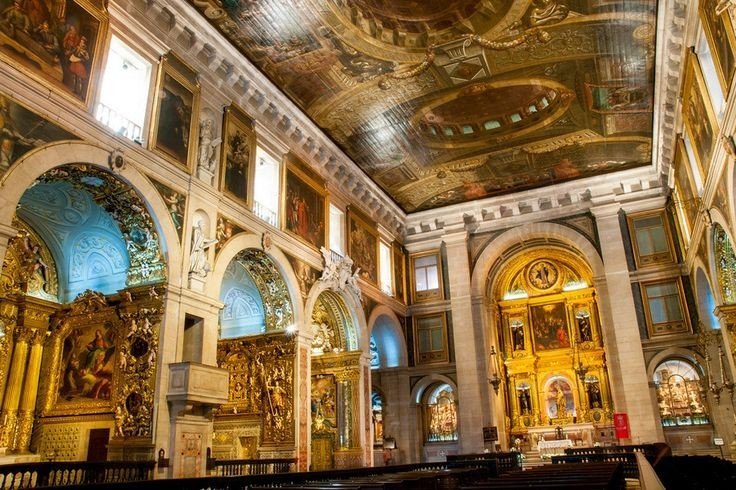THE SÃO ROQUE CHURCH
The history of the São Roque Church and the location of the hotel in the Bairro Alto
Located in Lisbon's 'upper' old city centre, the São Roque Church or Igreja de São Roque in Portuguese, welcomes hundreds if not thousands of visitors a day. With its 15th century typically baroque style and built under Dom João V. Globalement, it is adorned with gilded woodwork and luxurious silvery displays. The church, called Saint-Roch in French, recounts a deep and rich sacerdotal history of which the most precious belongings are still present between its walls.
The history of the São Roque Church
Built in 1565, the São Roque Church is dedicated to the patron saint of those who suffered of the plague which devastated a great portion of Lisbon around 1505. Designed by the architect Alfonso Alvarez, it was originally the residency of the first Jesuits present outside of Rome. 10 years later, the Italian architect Fillipo Terzi was hired to alter the building's design and modify the interior layout. A survivor of the 1755 Lisbon earthquake, it's in 1768 that the São Roque Church and its auxiliary building were handed over by royal charter to the 'House of mercy'. This congregation allows the church to carry the title of parish up to the present day. A large portion of the house became a sacred art museum and houses numerous sacerdotal jewels. It's also home to eight beautiful chapels and three alters where masses are still celebrated to this day. On the Igreja de São Roque's ceiling, one can contemplate splendid and haunting paintings depicting scenes of the Apocalypse. The paintings found in this church are almost identical to those in Rome.
The 9 Hotel Mercy is ideally located to visit Lisbon's Bairro Alto
For an unforgettable stay and a guaranteed change of scenery in Lisbon, chose a hotel located in the Bairro Alto near the São Roque Church. The 9 Hotel Mercy is a four star with numerous luxury and design rooms. The Bairro Alto's Jesuit baroque style blends perfectly with the hotel's design. Its exterior façade is perfectly consistent with the surrounding architecture's particular 16th century Portuguese style. Visiting Lisbon's upper neighbourhood can be done on foot starting from the hotel whether by day or for night time outings. All through the night various event are offered whether it's the traditional Fado or traditional food establishments opening their doors. During the day, given that the Bairro Alto neighbourhood is a highly prised shopping area, both tourists and inhabitants are seen mingling in the stores and amongst the various displays of clothing, books and accessories of all sorts. Staying there means having greater access to explore and discover a large portion of the city's cultural offering, the São Roque Church's Sacred Art Museum, part of Portugal's national heritage.


